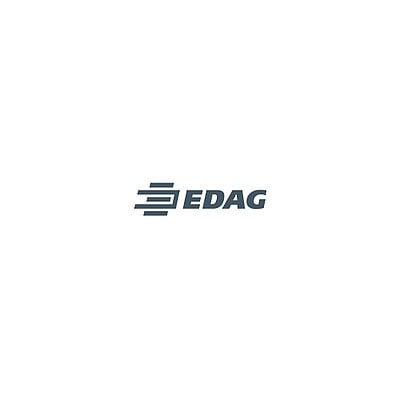It is a long way from the first draft to series production. One of the most important development steps is the initial implementation of the chassis and drivetrain in hardware in order to be able to test function and design. This requires the production of mule cars, which are only partially representative, but involve considerable costs and time. However, there are ways to make this development stage more efficient.
The mule is the namesake for a number of technical devices in very different areas. These include vehicle development, where initial tests are being carried out using mule cars at an early stage of development. The connection could result from the central characteristic of the mule: it is a hybrid of donkey and horse. And the mule car is also a hybrid: made up of representative elements that are essential for the new development and non-representative parts of the vehicle that are merely intended to ensure the function but have little or nothing to do with the final vehicle design.
High demand and high costs
Mule cars are a crucial part of the early development phase. They are used, for example, to carry out basic tests for the drive, high-voltage systems, battery, chassis and control software. Their importance is particularly high where completely new platforms are being developed, i.e. where it is not possible to fall back on existing vehicle concepts and "donor vehicles" based on them. In these cases, however, production is also much more complex.
This is being felt in particular by the numerous start-ups that are entering the market with new vehicle concepts in the course of drive electrification. However, even established brand manufacturers have now learned that an electric car is more than just a converted combustion car. Accordingly, they are also working flat out on completely new series - with a correspondingly high demand for mule cars that are expensive to produce.
Valuable data collections
During the driving tests with mule cars, extensive data is collected on the functionality and resilience of the drivetrain, battery and control system. Using measurement technology and data loggers, physical effects such as chassis loads, air currents and thermal effects can be precisely monitored. This data serves as the basis for optimizations in chassis tuning, control unit calibration and the simulation of further test scenarios. The aim is also to uncover potential problems in communication and programming.
 Caption: With a standardized "hat", the mule car can be set up faster and cheaper
Caption: With a standardized "hat", the mule car can be set up faster and cheaper
More efficiency in development
Testing with the help of mule cars is therefore essential for the development of new vehicles - despite the high costs and time required to produce these initial test models. However, there are ways to optimize this part of the development process. EDAG has developed its own mule car concept for this purpose, which offers significant efficiency potential. The advantages essentially result from these four factors:
- Optimization: Part of the mule car concept is the efficient production of the representative underbody - from the tools required to manufacture the parts, to the production of moulded parts or the drive shaft, for example, through to assembly. This also includes upstream validation and optimization.
- Standardization: Non-representative vehicle parts, such as the "upper body", are manufactured from simple materials such as square or laser-edged parts. Lower-voltage systems, such as indicators, lighting or ventilation, are built using inexpensive after-sales components from the mass market.
- Flexibility and modularity: The standard concept for the "hat" is always the same and is simply adapted to the dimensions of the floor platform. Thanks to this flexibility, EDAG's mule cars make it possible to adapt the outer skin to the requirements of the floor platform driven by the hard points of the representative chassis and thus to test the function of the connection points. The same applies to the connection of the LV systems. The upper body also offers space for extensive measurement technology and complex data loggers.
- Efficiency gains through integration: By linking with other development services from EDAG, such as concept development, validation and simulation, further time and cost benefits can be achieved. This enables faster and more cost-effective development.
The last point in particular offers additional efficiency potential in the realization of new vehicle concepts. Thanks to the broad expert knowledge of EDAG engineers and the extensive range of supporting services, engineering tasks can be outsourced to EDAG across several development stages, where iterative processes can be handled very quickly and without additional coordination effort.
Are you also looking for ways to speed up your development processes and save costs at the same time? Then talk to Michael Rittger, Senior Project Manager at EDAG Versuchs- und Fahrzeugbau, about opportunities for cooperation on mule cars and related engineering services. Or download our white paper "More efficiency in the construction of mule cars and related development steps", which gives you details of the EDAG mule car concept and the advantages of integrated development. 





